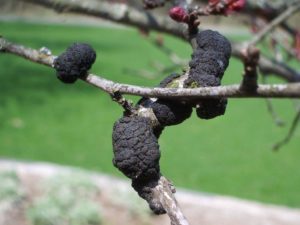A Special Meeting of Council has been called for Monday, June 25th at 7pm at Sedgewick Town office Council Chambers.
(more…)
Filter Articles
- Browse By Categories
- Announcements (125)
- Celebration Committee (1)
- Council (80)
- Fire Services (4)
- Town Events (13)
- Utilities (1)
Author Archive
Special Council Meeting June 25, 2018 at 7:00 PM
June 21st, 2018
NEW Walking Trail LED Lighting Installed!
June 19th, 2018
LED lighting with motion sensors was installed last week along the newest portion of Walking Trail west of 50th Street and north of the Wild Rose Coop Recreation Centre. (more…)
Council Meeting Highlights – June 14, 2018
June 18th, 2018
Council discussed the following issues during their June 14th regular meeting. (more…)
June 21st council meeting rescheduled to June 14th
June 5th, 2018
Public Notice:
The Town of Sedgewick monthly council meeting has been rescheduled from the third Thursday to the second Thursday in June.
The Council meeting shall commence at 6:00 PM on June 14th in the Town of Sedgewick Administration Office at 4818 – 47 Street, Sedgewick, Alberta.
Sedgewick Town Council declares Seniors’ Week June 3 – 9, 2018!
June 5th, 2018
In honour of the past, present and future contributions of the Seniors in this community, and throughout Alberta, Sedgewick Town Council has declared June 3 – 9, 2018 to be Seniors’ Week!
If you are talking to a senior this week, please thank them for their care, attention and dedication to their community!

Council Highlights for May 17, 2018
May 22nd, 2018
Town of Sedgewick Council discussed the following issues at their May 17th regular meeting of council.
Seeking July 1st Celebration Input
April 4th, 2018
The Sedgewick July 1st Celebration is seeking input from the Community for the 2018 July 1st Celebration! (more…)
New Boulevard Bylaw! New Application Requirements!
March 13th, 2018
Town Council deemed it important to maximize public safety and to maintain the aesthetic appeal of the Town boulevards.
Boulevard Bylaw 548/18 regulates that no person other than the Town shall:
- Pave any or all of a boulevard or back alley unless and until a permit to do so has been authorized.
- Be responsible for the repair of boulevard sidewalks and fire hydrants.
- Plant a tree on a boulevard or a back alley
- Prune, repair, trim or perform any work on a boulevard tree
Property owners are responsible to maintain any boulevard or back alley adjacent to the property they own or occupy.
A property owner may request pruning or removal of a tree adjacent to their property by submitting an application to the CAO.
View full text of the Bylaw: Boulevard Bylaw 548/18
Application for pruning or for tree removal: Application for Tree Pruning or Removal
Black Knot Disease! Time to Prune!
February 20th, 2018
Black Knot, caused by the fungus Apiosporina morbosa, is a very common disease of plants in the genus Prunus (all Cherry genus, Mayday, Plum and Apricot). This disease reduces the aesthetic value of affected specimens, as infections spread rapidly. High levels may result in the eventual death of the plant.
What can be done to control Black Knot?
- Removal of sources of inoculum (prevents population build up)
- Prune out all knot-bearing branches during late fall, winter or very early spring when plants are dormant and knots are easy to see.
- Remove infected branches to at least 15-20 cm (6-8 inches) below knot. NOTE: It is preferable to prune an infected branch further back to an appropriate location, such as a healthy collar, rather than leave a stub
- As a precaution, cutting blades should be cleaned and disinfected after pruning, if possible, especially if cuts have been made through obviously infected material
- For knots on scaffold branches or trunks that can’t be removed, cut away diseased tissue down to good wood and at least 1 cm (1/2 inch) beyond the edge of the knot
- Failure to remove branches beyond the internal growth will result in re-growth of the fungus.
DISEASED WOOD MUST BE DESTROYED IMMEDIATELY (burned, buried or removed from site). Diseased knots can produce and release spores for up to 4 months after removal. Proper composting can help to accelerate the breakdown of infected materials
The most distinguishing symptom of Black Knot is the characteristic black, tar-like swellings that develop on branches of the infected plant.
Please help stop the spread of this disease in our community!

